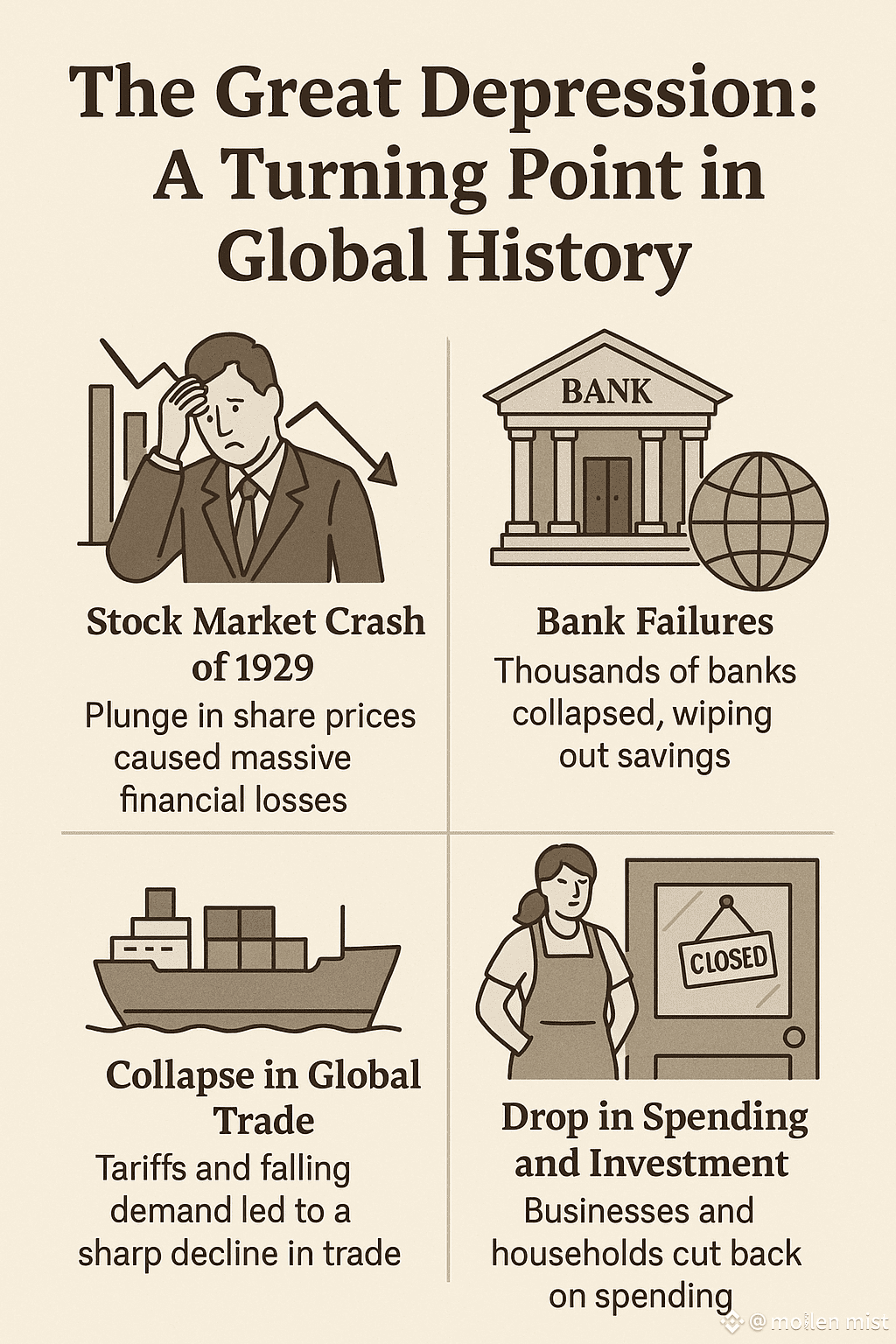Quick Overview
The Great Depression was a massive global economic collapse that started in 1929 and continued into the late 1930s.
It began with the U.S. stock market crash and was made worse by bank failures, trade restrictions, and falling consumer spending.
Government efforts like the New Deal in the U.S. and increased wartime production helped pull economies out of the crisis.
The Depression led to major changes in how governments handle economic policy and protect their citizens.
What Was the Great Depression?
The Great Depression wasn’t just a tough time—it was the most severe economic crisis the world has ever seen. For over a decade, people in many countries faced extreme hardship: jobs vanished, banks collapsed, and families struggled to survive. The impact was so deep that it changed the way governments think about money, trade, and public support forever.
---
What Sparked the Crisis?
There wasn’t a single cause—many different issues came together to trigger the disaster.
1. Stock Market Crash of 1929
On October 29, 1929—known as Black Tuesday—the U.S. stock market crashed. For years, investors had poured money into stocks, hoping for big profits. But much of that investing was based on speculation, and prices became unrealistic. When confidence dropped, panic selling took over, and the market collapsed. Millions lost their savings in a matter of days.
2. Bank Failures
As fear spread, people rushed to withdraw money from their banks. Many banks didn’t have enough cash on hand and were forced to shut down. Without banks, businesses couldn’t borrow, and people couldn’t access their money—causing spending to stop and more companies to fail.
3. Collapse in Global Trade
Countries tried to protect their own industries by raising taxes on imported goods. In the U.S., this was known as the Smoot-Hawley Tariff. But these policies backfired. Other countries responded with their own tariffs, and global trade fell sharply, deepening the crisis everywhere.
4. Drop in Spending and Investment
As jobs disappeared and money became scarce, both businesses and households stopped spending. Factories slowed down, shops closed, and investments dried up. The economy entered a downward spiral that seemed impossible to escape.
---
How It Affected the World
Widespread Unemployment
In many places, one out of every four people was out of work. Those who kept their jobs often faced pay cuts or poor working conditions. Families went hungry, and homelessness rose.
Business and Farm Closures
Thousands of businesses, from factories to farms, shut down. Farmers were especially hard hit—they couldn’t sell crops for enough to cover costs, and many lost their land.
Social and Political Shifts
The Depression wasn’t just economic—it also reshaped societies. In some countries, people turned to new political ideas, including extreme ones, hoping for solutions. While democratic countries introduced reforms, others saw the rise of authoritarian leaders.
---
Steps Toward Recovery
There was no quick fix. It took years of effort and several major changes to finally break free from the crisis.
Government Intervention
In the United States, President Franklin D. Roosevelt launched a bold plan called the New Deal. This program included job-creating public projects, reforms to stabilize the banking system, and new protections for workers. Other countries followed with their own efforts to boost employment and provide social support.
Impact of World War II
Ironically, it was World War II that helped end the Great Depression. The need for weapons, vehicles, and supplies led to a surge in production and employment. Factories roared back to life, and governments pumped money into their economies to support the war effort.


